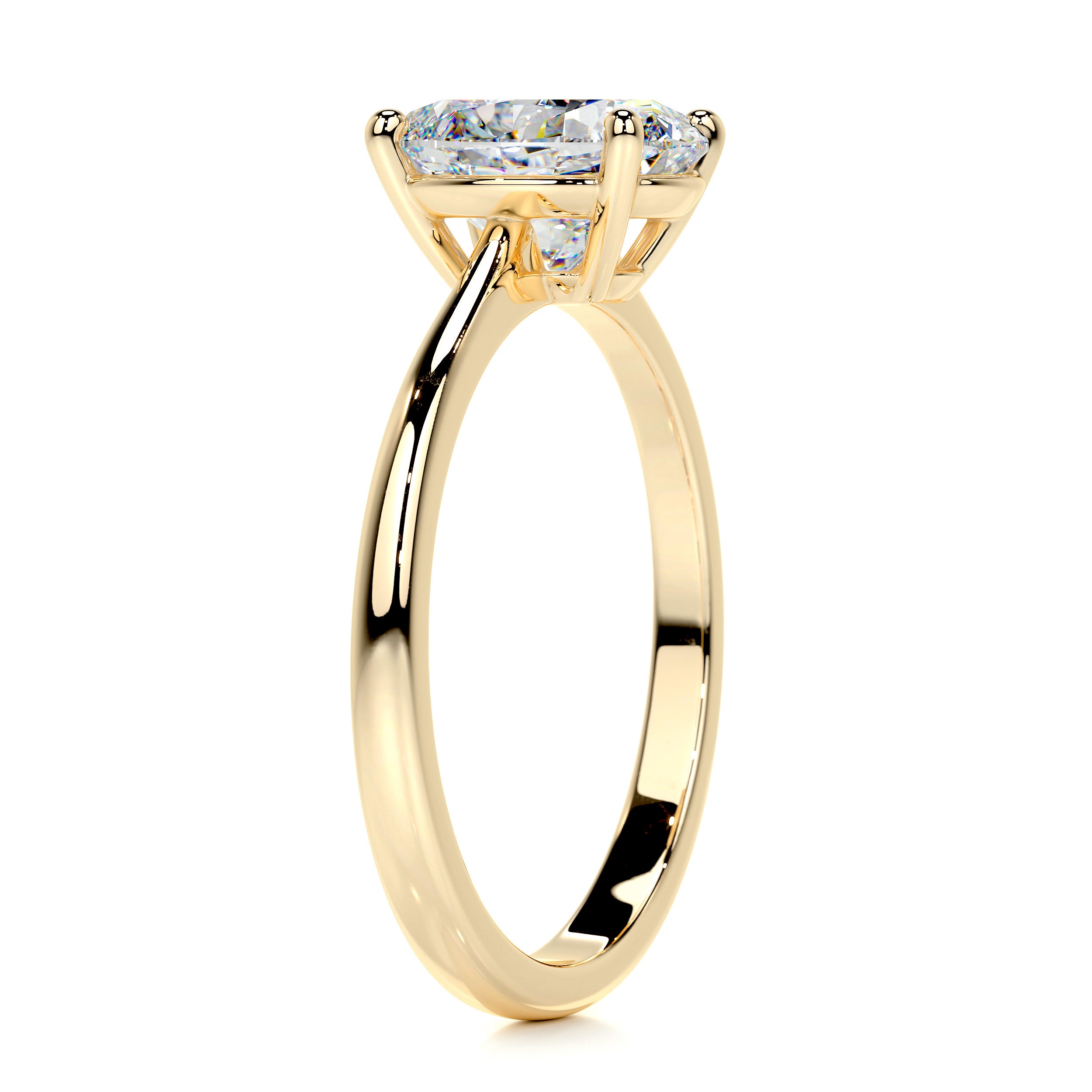With so many diamond options available on the market today, the more you know about them the better choices you’ll be able to make when shopping for your loose diamond or diamond engagement ring. If you’ve been looking for a while, you will have heard the expression ‘clarity enhanced diamonds’. But what does that phrase really mean? And are these diamonds a good choice when making such an important purchase? We’d say yes to that, and we’d like to explain why.
First of all, diamonds are a rare natural occurrence. Shaped underground over a period of millions of years, your gorgeous diamond went through a remarkable transformation from a simple carbon rock to a transparent sparkling gemstone. In that arduous creative process, a diamond often developed natural inclusions inside the crystal. Sometimes people refer to them as flaws or blemishes. Those inclusions lower the clarity grade and affect the beauty and consequently the stone’s value. Today however, tremendous strides have been made in the diamond industry to improve upon the beauty and the clarity of diamonds through several processes of clarity enhancement. Let’s discuss the various methods of enhancing a natural diamond to improve its beauty.

Laser Drilled Diamonds
One successful method of improving a diamond’s clarity and beauty is through laser drilling. This procedure utilizes micro-laser drilling into the area of the diamond where an inclusion is present. The laser produces a drill area less than the width of a human hair, so this extreme precision creates clean results by removing the flaws entirely. This method is often the treatment of choice when the internal blemishes are dark (black) and quite obvious to the naked eye.
Fracture Filling
Fracture filling treatments use highly sophisticated laboratory equipment to force a clear substance into the flaws which subsequently make them seemingly disappear. The filling treatment is in a liquid state when it is forced into the stone. It’s important to note that this filling in no way disrupts the stone’s integrity whatsoever. We love diamonds for their remarkable durability. A fracture filled stone maintains its strength. And also important to know is that the filling has the same optical properties of a diamond. Therefore, while it improves the clarity grade of the stone, it also aids in the appearance of a brilliant and sparkling diamond.
Looking for engagment rings? Check out our collection >>
Color Enhancement
As rare as diamonds are, once in a great while they are produced in a wide array of naturally occurring colors. Of course the discovery of such diamonds, referred to as fancy colored diamonds are thrilling to the diamond connoisseur. Those diamonds are often sold for hundreds or thousands of times more than their colorless counterpart.
Lately the public is becoming more and more familiar with fancy color diamonds thanks to so many celebrities seen wearing them to red carpet events. So technology offers diamond lovers an affordable solution to these pricey but colorful stones. Color enhanced diamonds develop their stunning hues in a few different ways:
Irradiation
The technique successfully used in creating colored diamonds first occurred over a hundred years ago when a chemist used irradiation (chemical salts) in a controlled laboratory setting to produce a diamond with a dark green color.

Today that irradiation system has been refined to safely turn genuine earth mined diamonds into a rainbow of colors like vivid grass green or even turquoise blue. These colors are stable—meaning they will keep their rich tint forever.
Diamond Coating
The process of diamond coating is not a new technique. Early jewelers in Georgian and Victorian times applied colored foils on the back surface of gemstones to create exciting new colors not found in nature. But today a more sophisticated approach based on the same idea is turning out sensational colors in diamonds like yellow or even violet. Modern surface coatings require a proprietary lab environment to vacuum coat a sheer film of color on diamonds with remarkably beautiful results. These and other procedures are disclosed of course in the sale by reputable dealers so that consumers understand what they are buying.
High-Pressure High-Temperature Treatment
Did you know that small amounts of diamonds are discovered annually with a natural brownish body color? They are still attractive stones and have all the fine qualities of the colorless variety. But they are often singled out to be treated with high-pressure and high-temperature in the lab. This process is also called HPHT for short. The procedure subjects the stones to extremely high temperature in a pressurized environment. The results are a whitening of the subjected stones, producing some alluringly colorless diamonds. Of course these too are identified by reputable dealers.
Diamonds in all forms are some of the most sought after precious objects of all time; and never more so than today. Their sustained popularity is due in part to the fact that these beautiful stones represent a beautiful love between special couples. Their durability reminds one of the unbreakable bonds of love that two people share.
Now that you know so much more about the enhanced diamond techniques available now, you’ll have more knowledge when shopping for your special stone. And when you’re ready to make a diamond purchase you’ll be able to consider the remarkable milestones that science offers in producing some really beautiful diamonds. What was once out of reach in the diamond world to most of us is now available at affordable prices. Beautiful diamonds of all kinds are a lovely way to celebrate the cherished memories of our life. ♦




















